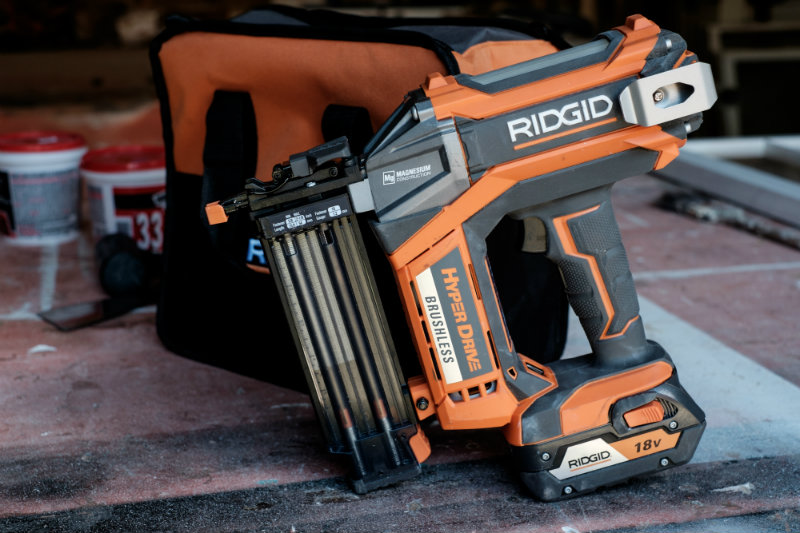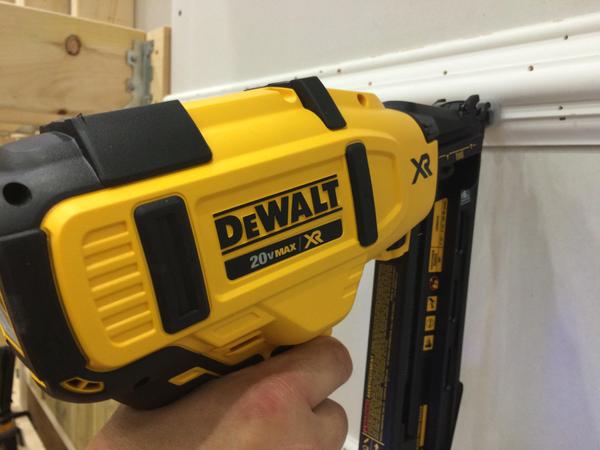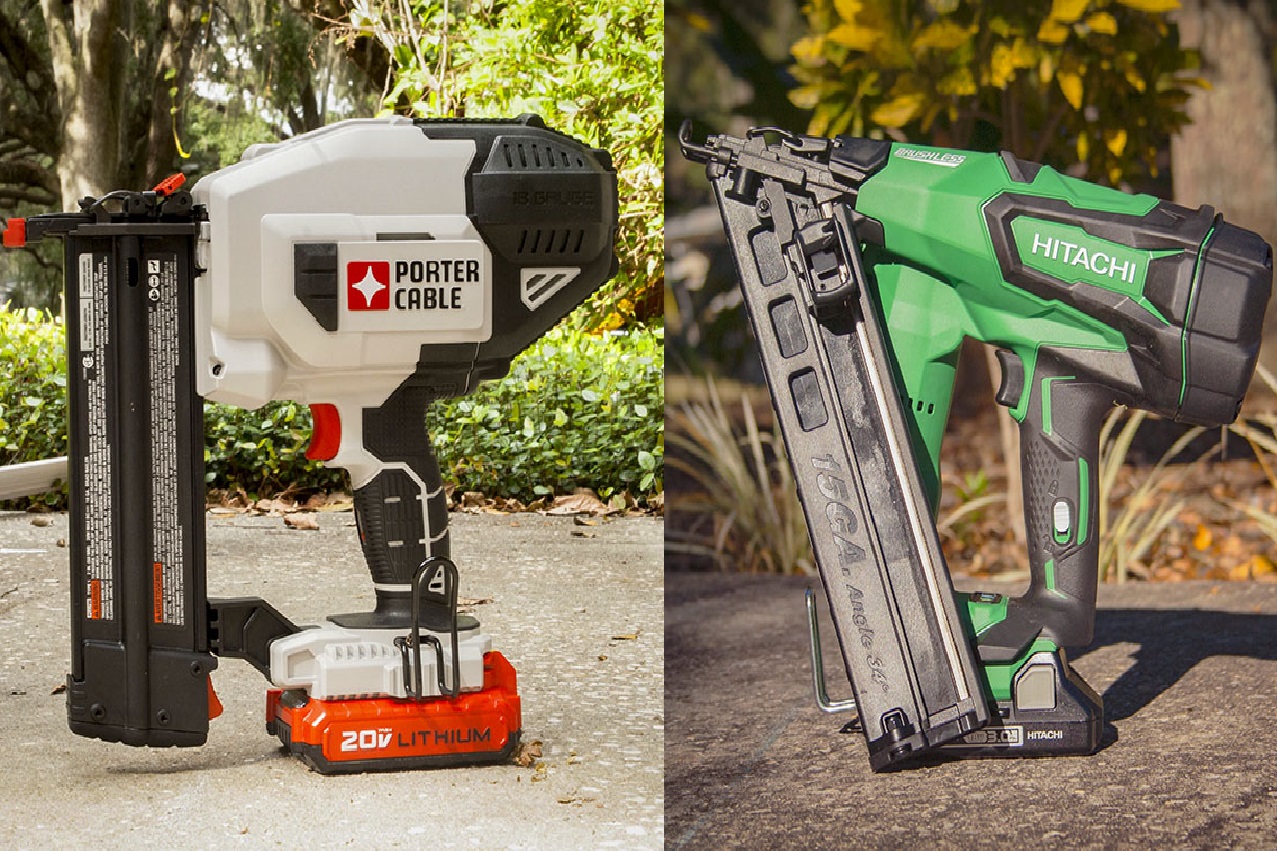Nail guns are quite overwhelming when it comes to the various types and because of this, you might find it hard to determine which one to use. Brad nailers and finish nailers are just two of the common tools used nowadays. You might be wondering how brad nailer vs finish nailer differs. The two basically possess the same physical traits. They have the same size. They also use the same nails. So, how do they differ from each other?
There could be a lot of opinions and commentaries about the two nailers. Nevertheless, you can cite several instances that can point out the distinction between the two nailers, and conclusively, help you come up with a good decision when doing your next task.
Brad Nailer and Its Uses

A brad nailer is fundamentally the smaller relative of the finish nailer. Hence, it is easier to distinguish its distinction from a finish nailer. It has a lightweight feature and is used easily when shooting brad nails. Contrary to the regular finish nails, brad nails are slimmer and display smaller heads.
Knowing that brads come in smaller sizes, using a brad nailer will no longer need a lot of force to dash nails. This gives users the advantage to easily and quickly fix delicate and thin moldings to spots where you want them attached without being worried about damaging them.
Brad nailers are ideally used for projects that do not require a lot of holding power and strength. It is also a good tool if you are particular with the size of the hole your nail makes once shot. You can also use this nail gun when attaching paneling, installing baseboard, attaching decorative molding, creating picture frames, impermanently keeping pieces together if applying glue, and other small-scale woodworking tasks.
Furthermore, another good thing about using a brad nailer is that it can be operated easily even with a single hand. When trying and nailing quarter round to a certain crown molding, you should know how hard it is to secure the material when attempting to pound in finish nails. Securing the material while quickly nailing it into where you exactly want it is perhaps one of the best things when using a brad nailer.
Although brad nailers have several good points, you should know that they can also make several drawbacks. Brad nails are simply not strong enough to keep thicker and heavier materials. Thus, you shouldn’t use it when installing thicker moldings such as casing, crown molding, or window trim. They are not also suitable for certain materials like hardwoods and MDF.
Finish Nailer and Its Uses

To run it through, a finish nailer is made to attach finishing materials such as crown molding and trim, with some finish nails.
Similar to a brad nailer, this tool utilizes headless nails. It just implies that there is no significant hole size noticed once you shot the nail. The smaller holes created by the finish nailer suggest that you do not need to use a lot of wood filler. Consequently, limiting the use of wood filler would mean limiting the need to do the sanding.
Finish nailers are versatile nail guns that are commonly used in non-structural projects. Just as how the name suggests, these tools are basically employed to finish a project. Finish nailers are commonly used when making cabinets, mounting hardwood floors, making staircases, mounting window and door casing, creating furniture, and installing crown molding, baseboard, and chair rails.
Almost all finish nailers can set the deepness when making nail shots. It just means that there is no need for you to secure more tools such as a nail set to punch the nails. Moreover, the headless nails that are used leave little holes which limit filling and the task to sand.
Compared to a brad nail, finish nails are a lot thicker and therefore create a more stable kind of joinery. A finish nailer is an all-around nail gun. You can use it with a large array of surfaces and materials. This gives the tool the advantage over the brad nailer as the latter struggles with some plywoods and MDF.
Nevertheless, you should be mindful of the disadvantages of using a finish nailer. The tool is not suitable for thin fragile materials. Also, although the hole size is small, it is still advised to fill it. It also does not execute the dishes.
Conclusion
You now have a better understanding of brad nailer vs finish nailer. By grasping the information shared in this article, you can now easily discern whether you should get a brad nailer or a finish nailer on your upcoming home project. However, if you are still not sure, you can just take a sample of material that you are planning to nail to a hardware store to solicit an expert opinion.

Leave a Reply